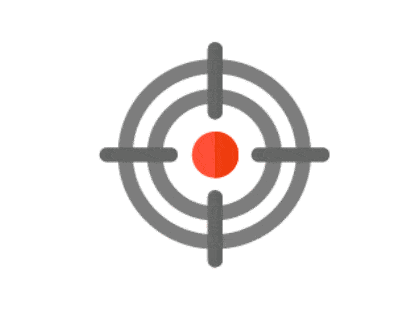SAPHNELO Consistently Reduces Systemic Lupus Erythematosus Disease Activity Regardless of Disease Duration and Prior Treatment

|
Study |
Summary |
|
Anifrolumab Results in Clinical Benefit Regardless of SLE Disease Duration: Post Hoc Analysis of Data From 2 Phase 3 Trials?(abstract #: 1741) |
|
|
SLE Treatment History and Anifrolumab Efficacy by Baseline Standard Therapies in Patients With SLE from 2 Phase 3 Trials?(abstract #: 1739) |
|
|
Efficacy of Anifrolumab in Patients With SLE Previously Treated With Biologics: Post Hoc Analysis of Pooled Data from 2 Phase 3 Trials?(abstract #: 1740) |
|
- Serious Infections:?Serious and sometimes fatal infections have occurred in patients receiving immunosuppressive agents, including SAPHNELO. SAPHNELO increases the risk of respiratory infections and herpes zoster. Use caution in patients with severe or chronic infections. Avoid initiating treatment during an active infection and consider interrupting therapy in patients who develop a new infection during treatment
- Hypersensitivity Reaction Including Anaphylaxis:?Serious hypersensitivity reactions (including anaphylaxis) have been reported following SAPHNELO administration. Events of angioedema have also been reported. Other hypersensitivity reactions and infusion-related reactions have occurred following administration of SAPHNELO. SAPHNELO should be administered by healthcare providers prepared to manage hypersensitivity reactions, including anaphylaxis and infusion-related reactions, if they occur. Immediately interrupt administration and initiate appropriate therapy if a serious infusion-related or hypersensitivity reaction (eg, anaphylaxis) occurs
- Malignancy:?There is an increased risk of malignancies with the use of immunosuppressants. The impact of SAPHNELO on the potential development of malignancies is not known
- Immunization:?Avoid the use of live or live-attenuated vaccines in patients treated with SAPHNELO
- Use With Biologic Therapies:?SAPHNELO is not recommended for use in combination with other biologic therapies, including B-cell targeted therapies
|
Efficacy endpoint |
Results by disease onset subgroup SAPHNELO?added to standard therapy versus placebo plus standard therapy?(95% CI; nominal p-value) |
|
|
Recent onset (<2 years) |
Established |
|
|
BICLA response at Week 52 |
SAPHNELO: 47.6% Placebo: 33.2% ?14.4% (-2.2-31.1; p=0.090) |
SAPHNELO: 47.4% Placebo: 30.3% ?17.1% (9.3-24.8; p<0.001) |
|
Baseline therapy subgroup |
BICLA results SAPHNELO?added to standard therapy versus placebo plus standard therapy?(95% CI; nominal p-value) |
|
Overall |
SAPHNELO: 47.5% Placebo: 30.8% ?16.6% (9.7-23.6; p<0.001) |
|
OCS only |
SAPHNELO: 45.5% Placebo: 23.7% ?21.8% (2.4-41.2; p=0.028) |
|
Antimalarial only |
SAPHNELO: 43.8% Placebo: 28.9% ?14.9% (-7.4-37.2; p=0.189) |
|
Immunosuppressant only |
SAPHNELO: 78.4% Placebo: 27.6% ?50.8% (-0.07-100.0; p=0.053) |
|
OCS + antimalarial |
SAPHNELO: 45.1% Placebo: 33.8% ?11.3% (-2.0-24.6; p=0.096) |
|
OCS + immunosuppressant |
SAPHNELO: 46.0% Placebo: 28.9% ?17.1% (-1.4-35.7; p=0.070) |
|
Antimalarial + immunosuppressant |
SAPHNELO: 40.0% Placebo: 33.0% ?6.9% (-24.0-37.9; p=0.660) |
|
OCS + antimalarial + immunosuppressant |
SAPHNELO: 53.6% Placebo: 32.2% ?21.4% (7.4-35.4; p=0.003) |
|
Efficacy endpoint |
Results by biologic treatment subgroup SAPHNELO?added to standard therapy versus placebo plus standard therapy?(95% CI) |
|
|
Biologic experienced |
Biologic na?ve |
|
|
BICLA response at Week 52 |
SAPHNELO: 44.1% Placebo: 24.6% ?19.4% (4.2-34.6) |
SAPHNELO: 49.1% Placebo: 32.4% ?16.6% (8.8-24.5) |
|
SRI(4) response at Week 52 |
SAPHNELO: 53.4% Placebo: 28.1% ?25.3% (9.9-40.7) |
SAPHNELO: 52.3% Placebo: 43.2% ?9.1% (1.0-17.2) |
|
Sustained OCS reduction at Week 40-52 |
SAPHNELO: 52.9% Placebo: 28.2% ?24.7% (2.0-47.4) |
SAPHNELO:?50.0% Placebo: 32.5% ?17.5% (6.6-28.4) |
|
Annualized flare rate through Week 52 |
SAPHNELO: 0.48 Placebo: 0.74 *0.65 (1.05-0.41) |
SAPHNELO: 0.51 Placebo: 0.64 *0.78 (1.02-0.60) |
Z4-38947 Last Updated 10/21





